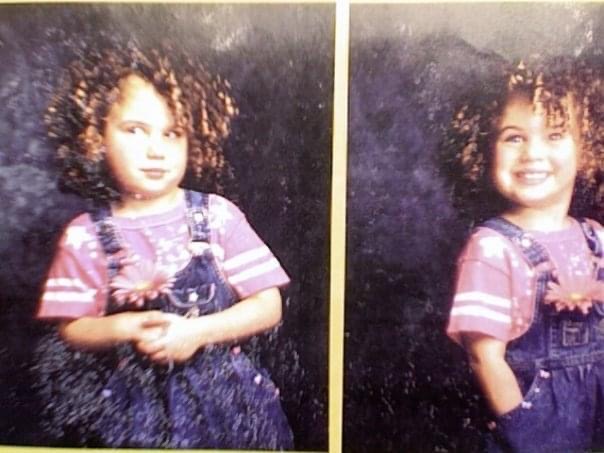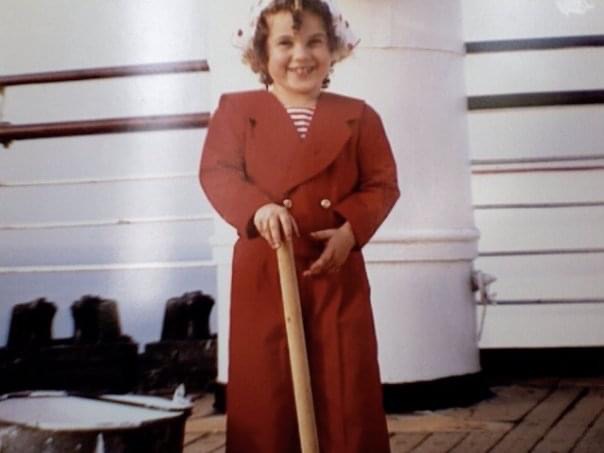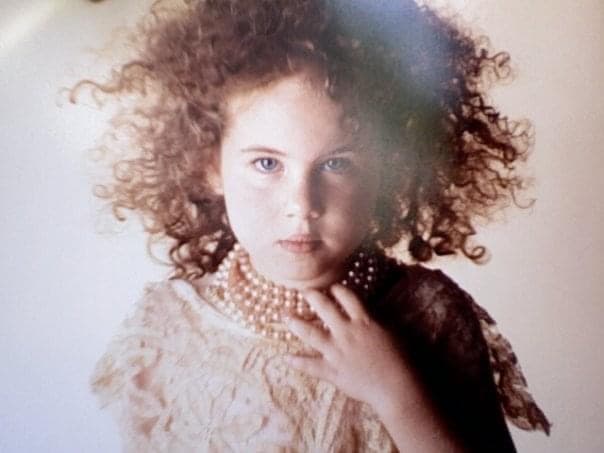The first time I engaged in body-focused repetitive behaviors (BFRBs or trichotillomania, hair pulling, excoriation, or skin picking), I cut off all the ringlets that were “sticking out” of my head. I didn’t like the way they came out of my ponytails when I was age 5.
I then hid the curls behind the sofa so I wouldn’t get in trouble.
You would think I would pull the hair out, but for some reason, scissors made more sense to me at the time. My mother was devastated. She had painstakingly spent every morning curling my hair around her fingers, making each curl “perfect.” When she taped my hair that she found behind the couch back onto my head, I was forever scarred into not cutting my hair again. This obviously was not the way to handle my BFRB. That was the most shaming thing to do to me. The most appropriate response would have been to ask me what I was feeling when I did it, and why, and then get me the support I needed.

As a kid, I was taken to a hypnotist to address my anxiety and hair concerns and the advice given was “get her a cat.” Sure, that helped in some ways (a purrbucket is always advised– hypnosis? maybe, sometimes)– but then I started picking at the cat’s eye gunk and nose gunk. Gosh, as I type this, I feel horrible that my habit reversal hurt an animal and no competing responses were ever proposed to me. Competing responses could have been – to wear gloves when with the cat, use a fidget, or draw.

When I was a teenager, the body-focused repetitive behaviors transitioned to a focus on my zits and pulling my eyebrows out with tweezers. I would spend hours at the magnifying mirror….and instead of focusing on limiting that time and some more competing responses like wearing finger condoms or freezing my tweezers and taking away the mirror, my mom put me on Accutane. That helped…and at the same time…it didn’t.
I still did the picking. Now, as an adult, I have dermatitis, a skin condition that causes scabs on my scalp and under my eyebrows. I had peeled off so many flakes of skin as a 20-30 something-year-old.
How I developed awareness with the SCAMP model and habit reversal training (HRT)
Now, as a therapist who also works with BFRBs, the SCAMP model makes so much sense.
The SCAMP model states that we are seeking particular things when engaging in picking/pulling and by knowing that you’re seeking certain things, you can manage better.
Sensory – What was I seeking? The texture of the bumps in my skin and the wiry nature of my hair.
Cognitive– What thoughts was I having before, during, and after my BFRB? 1) I look bad- I need to get rid of the bump/hair. 2) This is so cool seeing it come off…(disassociation abounded). 3) No! My face is red…my cat’s nose is bleeding…my hair is coming out in clumps…
Affective– What emotions did I have before, during, and after my BFRB? 1) So anxious 2) Excited/zoned out/less stressed 3) Shame 4) Back to stress!
Motor- What was my physical state before, during, and after my BFRB? 1) Pacing 2) Hunched over or glued to a mirror, standing for hours 3) Stinging/hurting in my face and scalp, blood coming out of my face and getting under my fingernails
Place- Where was I when picking and pulling? The car, on the couch at the TV. I think the overstimulation of sounds contributed to my anxiety.
WARNING: If you are ingesting your hair or skin, you should let your doctor know as a buildup of hair could cause an intestinal blockage called a trichobezoar. You can find out more information on this concern, here.
What was I seeking by picking and getting rid of my hair that was sticking out? Perfectionism. I didn’t want to see bumps and hair sticking out. I wanted to see smoothness when the reality is, nothing is totally smooth when it comes to skin unless you use filters on Instagram, TikTok, and Adobe Photoshop! So what does treatment look like?
Habit Reversal Training (HRT) helps. Tracking your picking and pulling urges on a free app like SkinPick helps develop an awareness of your SCAMP so that you can then make changes like having habit blockers in the places where you pick, lowering lighting in the bathroom, or blocking mirrors that you’re prone to pick around with sheets/tape.
Just because you pick and pull doesn’t mean there’s anything wrong with you. It’s been an old way of self-soothing…and it doesn’t need to be long-term.
If you have BFRBs, it’s likely you may also have OCD. And yes, I have some subtypes too! Yay! Labeling it helped to tame it….so here goes:
Perfectionism OCD
My mother curling each ringlet and constantly focusing on my body because I was a child model is probably what contributed to my perfectionism OCD, but it came out in my homework. I was memorizing all my books for tests, going over sentences, over and over again, and revising my assignments multiple times. I was drawing on top of my assignments with visuals of my words in case my words weren’t understood verbally. I was also staying up until 2:00 or 3:00 am repeating words and memorizing facts for tests for fear I wouldn’t get anything right. I made my mom repeat things I had to memorize. She thought she was helping, but she was engaging in accommodations. Engaging in my compulsions, showed my OCD that I couldn’t succeed unless I overworked myself. To this day, I may be what is called a workaholic and I think my neurodiversity contributes to that because I need more time to do things. Who knows if it’s perfectionism or neurodiversity, but timing myself, cutting off my work and turning things off, and not re-reading things helps.
How I made meaning from my BFRB
Now, as an ERP specialist with a BFRB specialty, I find it fun to be experimental with my own OCD. At first, this treatment feels like torture. It’s hard. You feel like sometimes you’re going to fail or that you can’t handle it. But guess what? We’re here to show you that you can handle it and you’re going to eventually tolerate the heck out of it. It’s funny how looking back on my childhood, I used to have my own exposure response prevention statement that got me through the day: “I may or may not pick.”
When families get involved in treatment, sometimes it’s helpful to look at our lineage to see where the hell this all came from. For me, just knowing that, in those with OCD, the basal ganglia is impacted and affects the compulsions/BFRBs is somehow helpful. Looking back on my family, I see now that maybe some of this is genetic and that makes me feel less shame. Even my mom had BFRBs and asked me to engage in HER picking while watching TV– kinda like a monkey! It’s funny to think about now.
Your worth doesn’t get determined by how much you control your BFRB. The outcomes of your BFRBs don’t define you. It’s possible to make changes. Progress is the goal, not perfection.
If you struggle with BFRBs, NOCD has a support group on Mondays. Make sure to pay attention to what time zone you are in. Check it out here.

